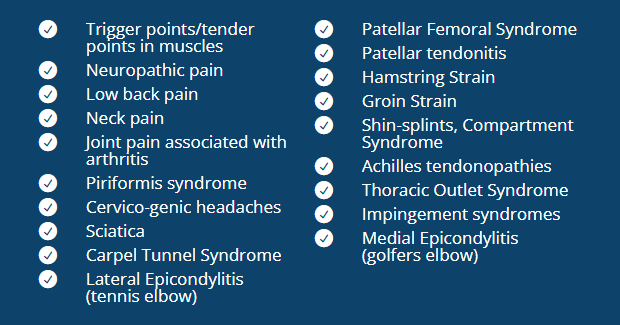Dry Needling is a technique that has been around for decades, yet has gained significant popularity over the last few years. We see professional athletes, celebrities and your everyday weekend warrior utilizing dry needling in the recovery process.
Dry Needling is a tool/technique we have used for years here in Columbus at Central Ohio Spine and Joint. Whether it’s tight muscle or sore trigger points, dry needling can help patients get out of pain fast!
Dry needling is a very effective therapeutic intervention used in combination with other interventions here at Central Ohio Spine and Joint. Dry needling is a skilled intervention that uses a thin filiform needle to penetrate the skin and stimulate underlying myofascial trigger points, muscular, and connective tissues for the management of neuromusculoskeletal pain and movement impairments.
Here are 6 facts you should know about Dry Needling…
1. Is dry needling the same as acupuncture? – No, although the technique of dry needling looks similar to traditional acupuncture due to the use of a dry filament needle, the rationale and execution of the treatment technique is quite different, akin to the difference between spinal manipulative therapy and chiropractic. Remember, a field is not defined by its treatment techniques but rather by its basis of ideology or its use of scientific evidence. Traditional acupuncture is a field of alternative care based upon cultural and societal ideologies as compared to dry needling which is treatment modality based upon scientific knowledge and what is known as evidence based or informed medicine.
2. What are common conditions you treat with dry needling at Central Ohio Spine and Joint?

3. What is a trigger point? Trigger points are common treatment areas for dry needling. A trigger point is a spot of muscle/fascia that is hypersensitive, painful when compressed, composed of a taut muscular/fascial bands that restrict oxygenated blood flow, and can refer pain and tenderness while causing motor dysfunction. Trigger points may develop during occupational, recreational or sports activities when muscle use exceeds the muscles capacity to handle stress, disturbing normal recovery. Dry needling differs from other types of therapy because it focuses on stimulating these trigger points and releasing the tension in order to alleviate pain.
4. What is a twitch response? The twitch response is a localized, reflexive response of a dysfunctional area of muscle to palpation, or in our case, a dry needle. When needling a trigger point, this is one of our goals as it leads to a rapid release of a taut muscle band, decreasing tightness and sensitivity of the surrounding area. A tight muscle or one with a trigger point will feel an achy discomfort with an occasional twitching or cramping sensation. This twitch response returns the muscle to a normal state by releasing inflammatory chemicals from the trigger point and restoring blood flow to the area. According to a recent study in the Journal of Orthopaedic & Sports Physical Therapy, The twitch may be a sign that the treatment will be successful. A local twitch response is a spinal cord reflex that creates an involuntary contraction that can be triggered by a snapping palpitation or penetration with a needle. When the patient has an involuntary twitch response, that suggests that the needle has hit the right spot.
5. Is Dry Needling Painful? – The short answer is no. Most patients are pleasantly surprised by the lack of pain associated with the treatment. Most described the sensation as light pressure with the occasional small pinch.
6. Is dry needling covered by insurance? – At this time insurance carriers do not consider dry needling a covered service, despite the overwhelmingly positive research. We charge an extremely reasonable cash price of $20-$55 per session. We also offer discounts with packages of 6 and 12 treatment sessions.
READY TO TAKE BACK AN ACTIVE LIFE, FREE FROM PAIN?

Recent Comments